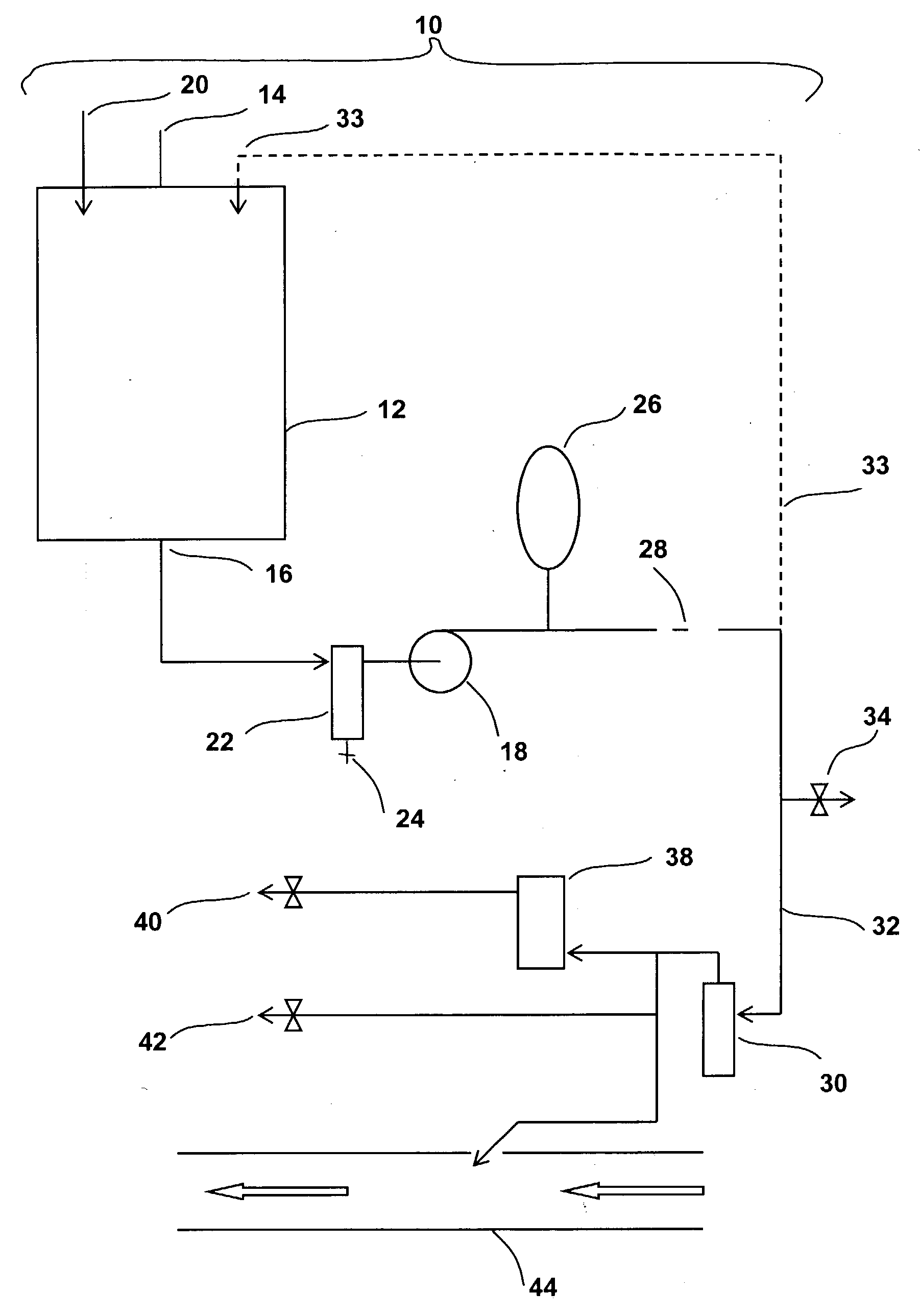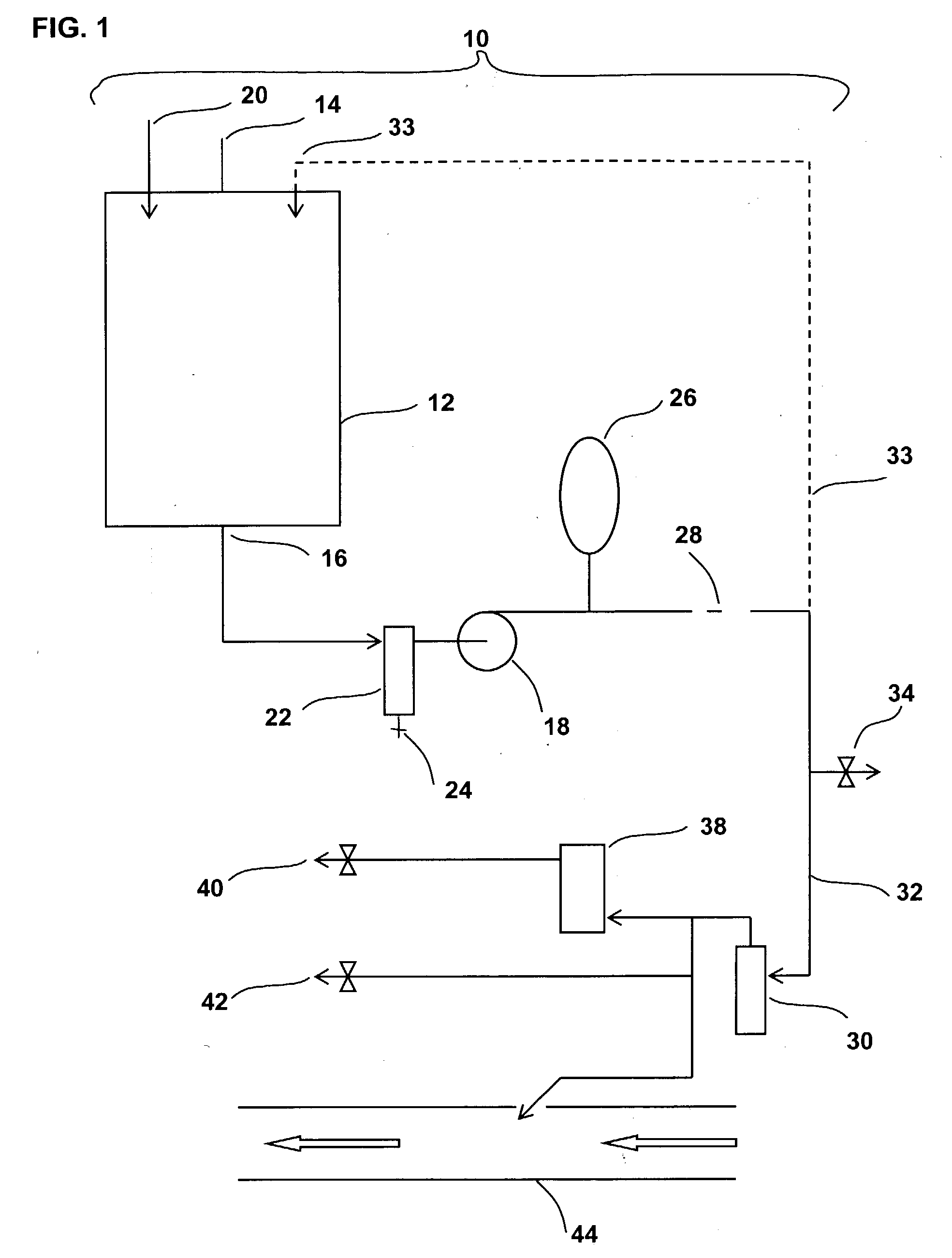Internal UV treatment of potable water systems
a technology of uv treatment and potable water, applied in the direction of separation process, filtration separation, instruments, etc., can solve the problems of inability to reduce biofilm on the interior of the tank, the nature of the water supply is massive and wholly unsuitable for portable or vehicular use, and the treatment is at most only partially effective, so as to reduce or eliminate the accumulation of microorganisms and biofilm
- Summary
- Abstract
- Description
- Claims
- Application Information
AI Technical Summary
Benefits of technology
Problems solved by technology
Method used
Image
Examples
Embodiment Construction
[0064] The following description of the preferred embodiments is not meant to be a limitation of other possible modes for implementing the principles of the present invention.
[0065] The present invention provides a system for effective UV treatment of potable water, for a mobile or small self-contained potable water system in which the water is stored or resident in one or more tanks or vessels. By “resident” it is meant that the water rests or remains to some extent within the vessel or other components during operation of the system, as opposed to simply flowing through it. In contrast to the prior art, the present invention thus employs UV light sources that are positioned within the tanks and other vessels, rather than relying solely on a “flow past” approach. The UV lamps are mounted in quartz tubes within the vessels, and are preferably supported against damage by vibration. A similar structure is provided for mounting a UV lamp within the interior of an outlet faucet. In add...
PUM
| Property | Measurement | Unit |
|---|---|---|
| Volume | aaaaa | aaaaa |
| Photocatalytic properties | aaaaa | aaaaa |
| Antimicrobial properties | aaaaa | aaaaa |
Abstract
Description
Claims
Application Information
 Login to View More
Login to View More - R&D
- Intellectual Property
- Life Sciences
- Materials
- Tech Scout
- Unparalleled Data Quality
- Higher Quality Content
- 60% Fewer Hallucinations
Browse by: Latest US Patents, China's latest patents, Technical Efficacy Thesaurus, Application Domain, Technology Topic, Popular Technical Reports.
© 2025 PatSnap. All rights reserved.Legal|Privacy policy|Modern Slavery Act Transparency Statement|Sitemap|About US| Contact US: help@patsnap.com



